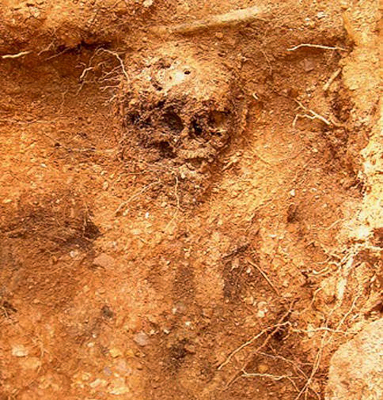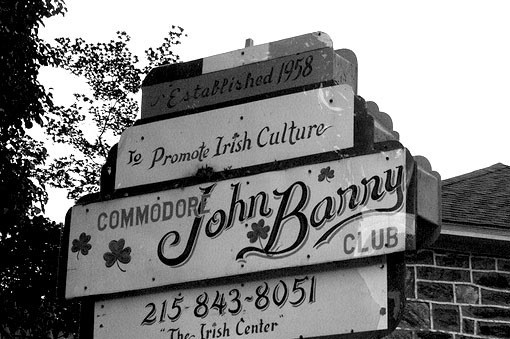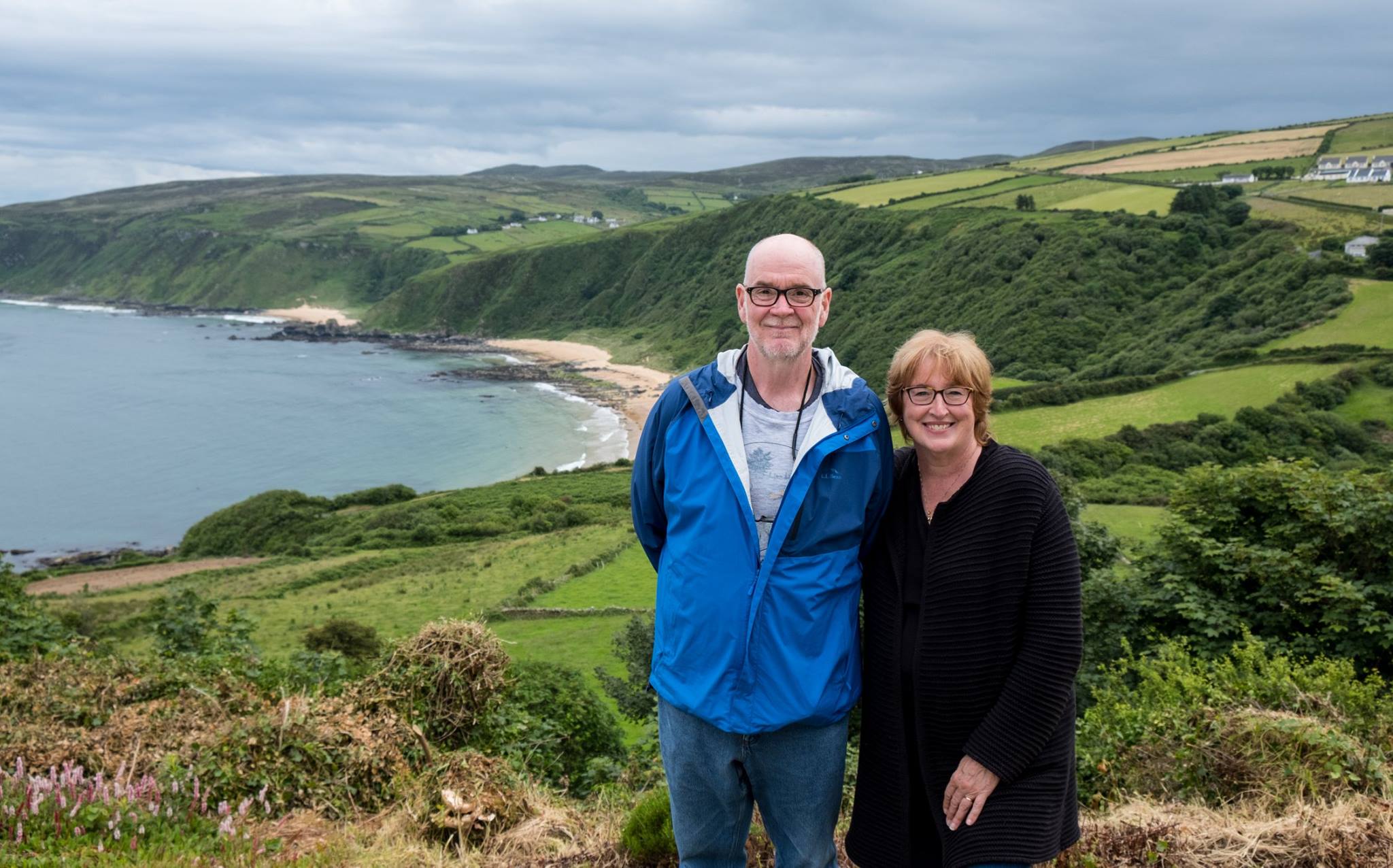
The skull of Catherine Burns as it was found in the archeological dig. Photo courtesy of Duffy’s Cut.
Catherine Burns is going home in July. She will be buried under a Celtic cross in the cemetery of St. Patrick’s Parish of Clonoe, County Tyrone, Northern Ireland. She is the second of the victims of the Duffy’s Cut tragedy whose remains will be interred in the country they left behind in 1832 to find a better life, but who met death instead.
Hers was the seventh body they found—a handful of bone fragments really—in the pit of clay and shale at the Malvern archeological site called Duffy’s Cut, after the 19th century railroad contractor who recruited dozens of Irishmen to work on laying tracks for the Philadelphia and Columbia Railroad, now part of Amtrak’s northeast corridor. Fifty-seven of them died there, only six weeks after arriving on American soil on the ship John Stamp, which had sailed out of Derry on its two-month Atlantic voyage.
The body was known as SK007—a designation indicating only the order in which it was discovered. But one day, several years ago, as a team of students, led by Immaculata College history professor William Watson, his twin brother Frank, a Lutheran minister, and several colleagues, worked at the site, they received a phone call that helped them give those bones a name.
“We were finishing digging out the body we were calling ‘the tall man’ when we got a call from Janet Monge, our forensic anthropologist at Penn, who told us that it was a woman,” recalled the Rev. Frank Watson. “First and foremost, we almost fainted. We had found a pelvis and a skull and Janet told us that the palate was small and it was a woman’s pelvis. We knew from the ship’s records that there had been a young woman, Elizabeth Devine, who came with her brother who was a laborer. But Janet told us she was too young. This was another woman aged around 30, so that left a woman who had traveled from Tyrone on the John Stamp with her father-in-law, John Burns, at 70 the eldest of the immigrants. She was a widow and her name was Catherine. She was 29. And we found historically that she had disappeared with John, like the others.”
And, like the others, Catherine Burns’ remains showed signs of violence. “She had been treated just like the men. She died of blunt force trauma, just like the rest of the men except for the tall man under the tree who had a bullet in his skull. She was beaten to death,” said Watson. “There were no defensive wounds, so they were probably tied up before they were killed. It’s just horrible.”
Over the years, the Watson brothers and their colleagues pieced together what is now a well known story of Irish immigrants seeking a better life who were murdered by local vigilantes who feared the spread of a cholera epidemic that had overtaken the small encampment where the laborers lived, near a likely contaminated creek running by. Only a small group of nuns, the Daughters of Charity, were courageous enough to minister to the Irish workers, coming out from Philadelphia to do so.
It’s a story told even in Clonoe, a rural parish on the southwest corner of Lough Neagh, says Father Benny Fee, pastor of St. Patrick’s. “It is surprising to me how many [of my parishioners] are aware of Duffy’s Cut and the terrible things that happened there,” he wrote in an email this week.
A friend and former parishioner, Brian McCaul, now of Upper Darby, suggested that Catherine’s remains might find a home in the Clonoe Parish Cemetery. “We got involved because as far as I know Brian gave my name to some of the people involved in the Duffy’s cut Repatriation Project,” wrote Father Fee. “We feel very honored to do something for this child of God, Catherine Burns, a lady who I suspect was given very little dignity or value in life. The seventh corporal work of mercy is to bury the dead, so it is a privilege and an honor to be asked to be involved.”
On Sunday, July 19, after a Mass performed by Father Fee, Catherine Burns’ remains will be interred at the foot of “what we call the Tall Cross of Clonoe,” wrote Father Fee.
It’s “a modern cross erected in 2008 in honour of the 150th anniversary of the apparition of Our Lady at Lourdes.,” he wrote. “It is modeled on the Papal Cross that was raised above the Altar in Dublin’s Phoenix Park for the visit of Pope John Paul to Ireland in 1979. And remember at Shannon Airport he spoke of those countless men and women who left Ireland for the New World just as he was leaving Ireland to travel on to New York to address the United Nations. The Cross is lit up at night, based on the lighting of the Bridge of Peace at Drogheda, County Louth. The Cross for us, of course, as believers in Christ is the great bridge from this world to the world of the Presence of God.”
Catherine’s remains will be accompanied by the Watson brothers and their close colleague Earl Schandlemeier who will also revisit and place a marker on the grave of 19-year-old John Ruddy, a victim from Donegal, whose body was buried a year ago in a plot in Ardara, Donegal, donated by Irish Center President Vincent Gallagher. Gallagher may also attend the ceremony. Five other victims whose remains were discovered but who have never been identified are buried in a donated plot—under a Celtic cross—at West Laurel Hill Cemetery in Bala Cynwyd where, until recently, Catherine Burns’ remains were interred.
Several local organizations, including the Philadelphia Tyrone Society and the Friendly Sons of St. Patrick, as well as individuals have contributed to the cost of repatriating the bodies. “Kathy McGee Burns gave us a significant gift he night of her installation as grand marshal of the Philadelphia St. Patrick’s Day parade,” said Watson. McGee Burns, president of the Irish Memorial, also contributed to John Ruddy’s burial in Donegal.
Work will resume at the Duffy’s Cut site on June 8—core samples will be taken to determine if there are any bone fragments in a space under the tracks where screenings found another possible mass grave, possibly the other 50 missing workers, said Watson. “Ideally, if we find what we anticipate we’ll find, the dig will reconvene this year. We have no idea what the Amtrak derailment [on Tuesday night, May 12, in Philadelphia] will mean to this.”
What makes the Watsons and their colleagues press on is something both personal and spiritual. The story started for them one day in 2002 while going through files that belonged to their grandfather, who was executive assistant to the president of the Pennsylvania Railroad, Martin Clement. Clement had kept an extensive file on Duffy’s Cut and it had wound up in their grandfather’s papers.
“We inherited the story from our grandfather and we think it’s for a reason,” said Watson. “This didn’t come to us by accident. This is a story that needs to be told and we need to work for justice and right for these people who never got the chance in their lifetime.”
Photos of other remains below from the Duffy’s Cut team.
[flickr_set id=”72157649056415304″]


